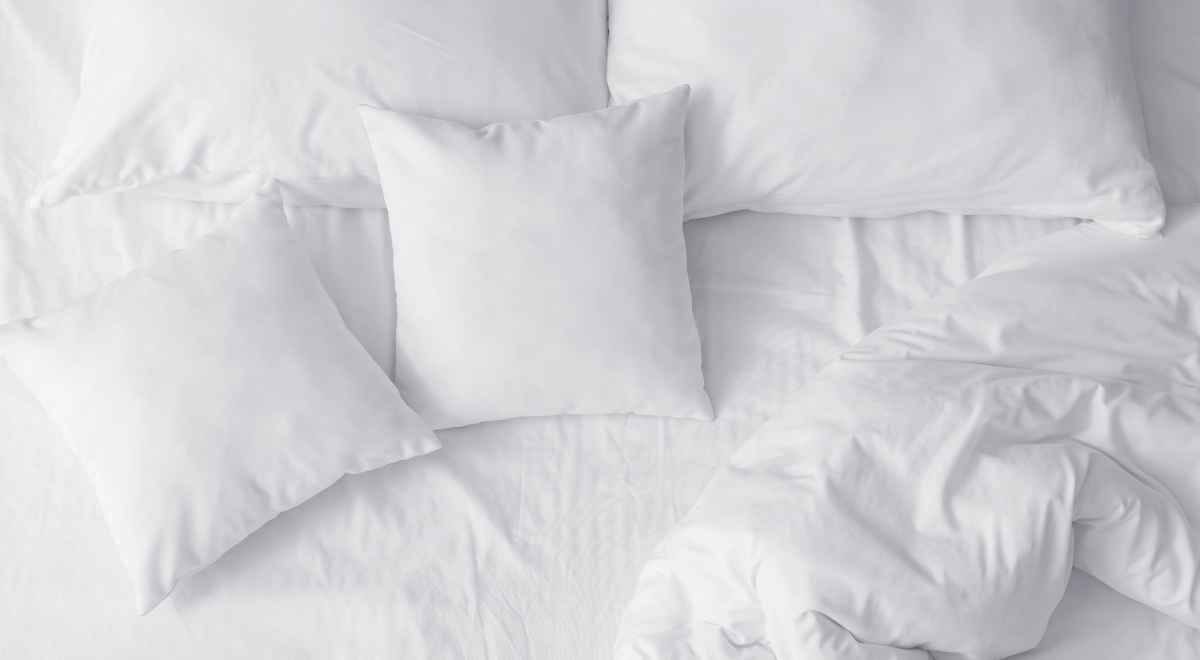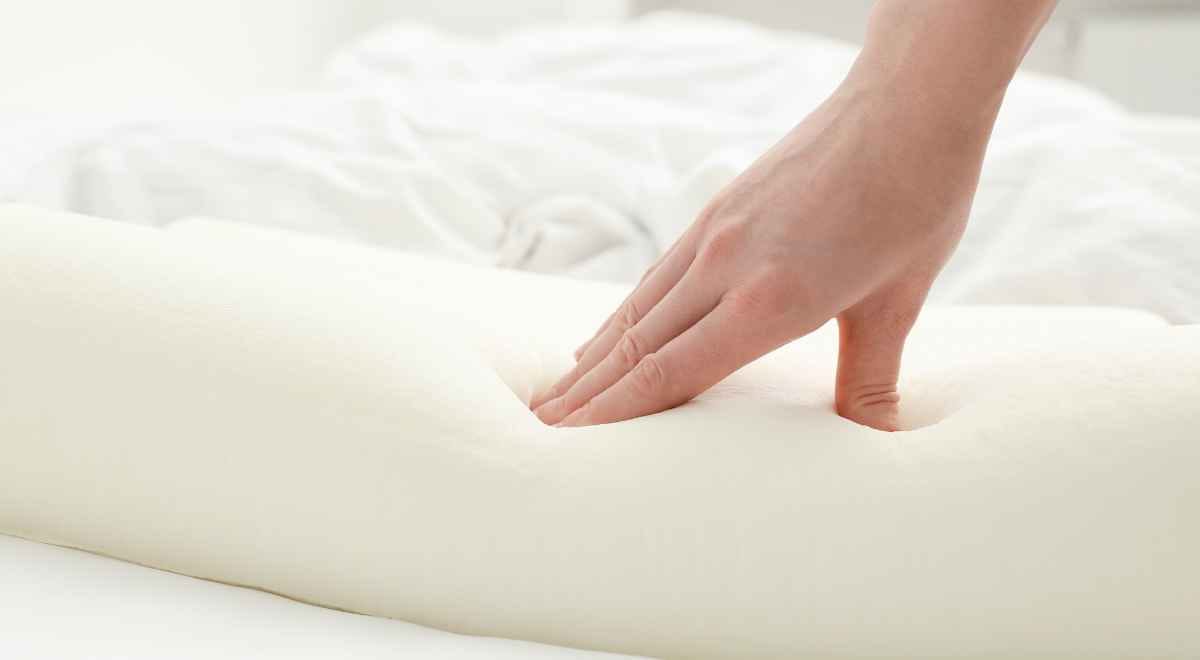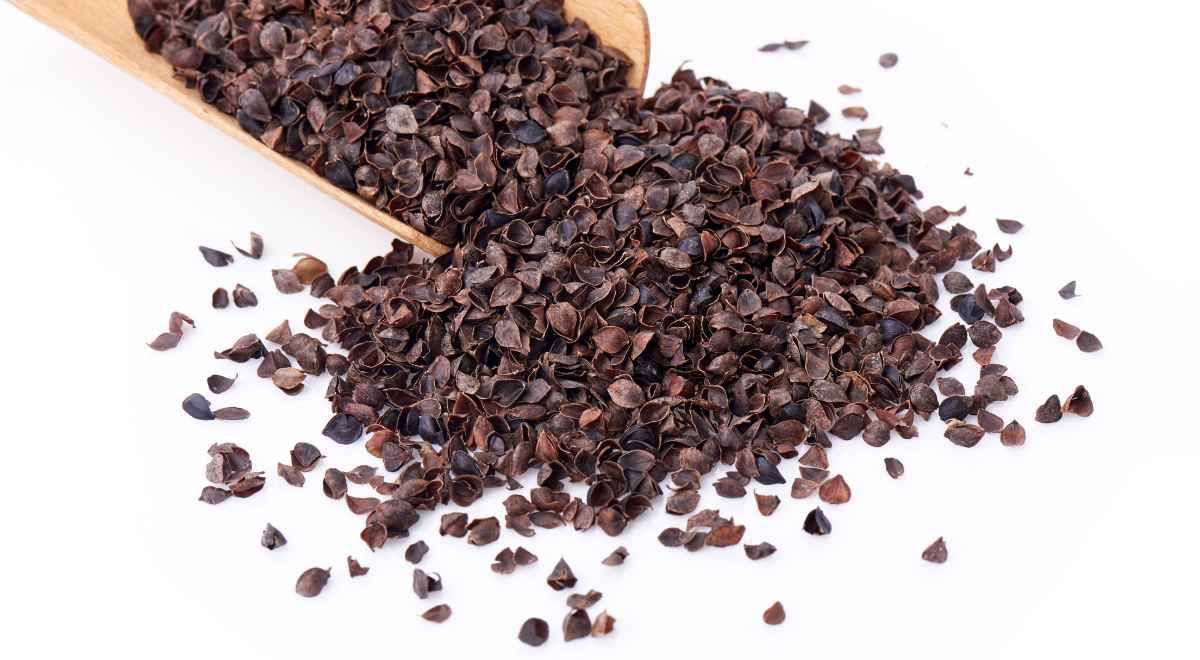Know Your Pillows: History, Science, Types, and More…
Want to know more about your soft and fluffy sleep companion? Read on to get an in-depth understanding of Pillows and their significance.

Ever Wondered why pillows are fluffy? What are they made of? or How they came into existence? Even if you didn’t, I did, and so here we are.
Quick Links
History of Pillows
You can trace back the progenitor of your pillow to Mesopotamia in around 7,000 BC. In case you skipped your history lessons, that was 9,000 years ago. Back then the pillows were more for protection than comfort. The Mesopotamians used pillows to raise their head when sleeping to deter insects and other creepy crawlies from waltzing into their hair or the open orifices of their head. Those pillows just weren’t as hard as stones, they were literally carved out of stone. Even then, they were a symbol of status, and hence not everyone could use one.

Fast Forward a few thousand years, people around the world are still using hard pillows. The Egyptians are using pillows made of stone, wood, and ivory. The Chinese are using Jade, Bamboo, and Porcelain pillows, even though they are capable of making soft pillows. They refuse to use soft pillows because they believe it will make them weak.
The ancient Greeks and Romans too used similar materials for their hard pillows. But some rich individuals wanted something more comfortable, they used pillows stuffed with feathers or straws.
Even after the fall of the Roman Empire, pillows were too much of a luxury to become popular. It was not until the onset of the Industrial Revolution that textiles became popular and affordable. This made pillows accessible to the common populace, they bought fabric, made pillows, and filled them with whatever soft material they could find.
A major change came in the 19th century when Polyester fillings were introduced. They became a popular filling choice for pillows. From then till now, we have had many advancements in that field. Modern-day pillows have become more sophisticated and comfortable by harvesting the cream of the technological crop.
Pillow Science
Are there any merits in using a pillow other than for comfort and the occasional pillow fight? To answer that we need to start with the basics.
Why Use a Pillow?
It has been a while since pillows were used as a status symbol. The chances of anything crawling into your hair or any other orifices of your head are significantly low (but never zero), thanks to sleeping on a bed surrounded by four walls, a ceiling, and a floor. Then why else use a pillow other than for comfort?

Support
The main reason is to provide alignment and support to your neck and spine. Pillows help distribute the weight of your head and neck more evenly, this reduces a great deal of pressure on these parts, making your sleeping experience more comfortable.
Temperature Regulation
Additionally, depending on the material used to make the pillow, it can either warm or cool you by controlling air circulation and/or trapping or dissipating heat.
Improved Sleep
Pillows keep your spine aligned, if this doesn’t happen, the chances of waking up randomly during the night drastically increase, causing loss of sleep.
Special Needs
Apart from your regular sleeping pillows, there are many other types of pillows that mostly exist to fulfill special needs. We will discuss this in the Types of Pillows section.
Common issues Caused by Pillows
Using an improper pillow can cause you more problems than it solves, here are some issues caused by using the wrong pillows.

Allergies and Respiratory Problems
Pillows build up dust and other particles over time, these are great breeding grounds for dust mites. They can trigger allergies, cause respiratory issues, sneeze, and irritate your eyes.
Neck and Back Pain
Waking up with a sore neck or back? There is a high chance that your pillow is the culprit. When you use an overly thinner or thicker pillow, your spine does not get the needed support, this is what causes neck or back pain when you wake up from your sleep.
Headache
A paracetamol isn’t the answer if you are waking up with a headache, it is maybe time to change your pillow. Constant Neck pain caused by a pillow can lead to a tension headache.
Wrinkles
When sleeping sideways on a high pillow your cheeks are put under pressure, if this continues for a long time it might cause sleep lines and wrinkles on your face. So yeah, if you want to age prematurely, sleep on your face.
Poor Circulation
Ever felt numb after waking up? This is due to the poor circulation of blood to your limbs caused by using a high pillow. This can cause severe problems if left unaddressed.
Digestive Issues
Sleeping in an elevated position due to a high pillow can cause acid reflux or heartburn. Due to the improper posture of your body while sleeping, stomach acid can travel back to your esophagus causing a burning sensation, and ultimately leaving a bad taste in your mouth.
Acne
Pillows, especially dirty pillows have a lot of residue accumulated in them. When these come in contact with your skin, they can clog the pores and thereby cause an acne breakout.
Finding the Right Pillow
While pillows elevate your head, relieve pressure, and help with good blood circulation. A wrong pillow can cause discomfort and a host of other problems as discussed in the previous section. That is why it is crucial to find the right pillow.

Here’s how you can find the perfect pillow for you.
There are some factors that have to be considered when picking a pillow, like- height, weight, sleeping positions, allergies, and other health conditions.
Neck Alignment
Whatever pillow you choose, the first thing you have to check is neck alignment. When you rest your head on the pillow, your neck should be aligned with your back. If the pillow is too soft your neck will be bent while sleeping, the same thing happens if the pillow is too hard. Find a pillow that aligns your neck with your back, i.e. something that keeps your spine straight.
Sleeping Position
Side Sleeper:
You will need a firm and Thick pillow to compensate for the gap between your head and shoulder to align your neck properly.
Best Types of Pillow- Memory Foam Pillow, Cervical Pillow, Buckwheat Pillow
Back Sleeper:
The distance between the head and bed isn’t too much, hence a medium-thick pillow works perfectly.
Best Types of Pillow- Latex, Memory Foam, Down feathers (or similar alternatives)
Stomach Sleeper:
If you prefer sleeping on your stomach, a very low or flat pillow works best. Go any higher and you risk straining your neck.
Best Types of Pillow- Memory Foam
Combination Sleeper:
If you sleep in random positions then the Buckwheat or any other adjustable pillow is recommended. Or you will have to use multiple pillows depending on the position you are sleeping.
Body type
This goes without saying- a smaller pillow for a small person and vice-versa. Using a pillow too big or small for you will excessively flex your neck causing strain.
Temperature
If you feel hot when sleeping, it is best to consider pillows that are breathable or those made of cooling materials. Here are some pillows that can cool you down- Shredded Latex, Gel-infused memory foam, Down, and pillows made of material similar to down.
Allergies
For people afflicted with various allergies, certain pillows can worsen them. For them, hypoallergenic pillows are the safest bet. These are highly resistant to dust mites, whose favorite nesting spots if you didn’t know are- pillows and other bedding.
Mattress
The Mattress you sleep on is another deciding factor when choosing a pillow. Soft mattresses will cause your body to sink further into it, so while sleeping on them your pillow will have to be slightly thinner than normal to compensate for it. Likewise, on firm mattresses or beds, your pillow needs to be slightly thicker than normal.
Types of Pillows
Since the first stone pillow, pillows they have come a long way. In their long journey through time, they have branched out into a variety of types to cater to the ever-growing and diversified needs of the general population. Here are some of the popular pillow types based on certain categories-
Fill Material
Down Pillows

Down or Down feathers are typically soft and fine goose feathers that are below the hard outer feathers making them very soft and light. These are luxurious and thereby expensive, they provide good insulation too. You’d do well to note that this pillow can cause allergies due to the nature of the filling.
Down Alternative Pillows
As the name suggests, these pillows have stuffing that tries to mimic Down. Also called Synthetic down, these pillows are filled with polyester to mimic the feel of down. These are hypoallergenic and relatively inexpensive.
Feather Pillows
These have feathers as stuffing along with a small amount of down. They are affordable, soft, and light. You could consider them a nerfed version of Down Pillows.
Memory Foam Pillows

These pillows are made from polyurethane and other chemicals allowing them to conform to the shape of the sleeper’s head and neck. This alleviates pressure and provides excellent support to your neck. The best part is that they return back to their original shape once the pressure on them is removed.
Shredded memory Foam Pillows
These are memory foam pillows but better, they offer more breathability thanks to the shredded foam inside. Additionally, the filling can be added or decreased, unlike the traditional Memory foam pillows.
Latex Pillows

They are soft, cozy, and to a degree breathable, they are also known to provide excellent support. This is all thanks to the natural properties of rubber.
Cotton Pillows
Cotton Pillows are well, made of cotton. Their popularity has been steadily fading thanks to the new-age fabric pillows. They are light, hypoallergenic, easily breathable, and easy to wash. Since they do not contain any synthetic materials or chemicals, allergies from them is negated.
Buckwheat Pillows

These pillows are filled with Buckwheat hulls, which make the pillows highly moldable, firm, and breathable. The only downside is that they are noisy and may be too firm for some sleepers.
Microbead Pillows
They are exactly like Buckwheat pillows but synthetic. While they are breathable and moldable like Buckwheat pillows, they lose shape faster than what they are based on.
Gel Pillows
Gell pillows have a layer of gel inside them, this keeps them cool and firm. They can be molded to fit your neck and head comfortably.
Size, Shape, and Function
Standard, Queen, and King
Based on Size the three most common pillow sizes are Standard (20" x 26"), Queen (20" x 30"), and King (20" x 36").
Body Pillows

They are elongated pillows (usually 20’’ x 54’’) that provide full body support. They are great for side sleepers and those who like cuddling a pillow when sleeping. They have been recently popularized by Anime fans by printing characters on Body Pillow covers.
Cervical Pillows

These ergonomic pillows are designed specifically to provide optimal support to the neck by supporting the natural curve of the cervical spine. They can help alleviate the pain of people with neck or spinal problems.
Wedge Pillows

These are triangular pillows that elevate the sleeper’s upper body, this is helpful for people with acid reflux, heartburn, edema, neck/back pain, or other respiratory issues.
Pregnancy Pillows

These are generally U-shaped pillows designed to help pregnant women. They keep the spine, back and hips aligned by providing sufficient support and relieving pressure.
Travel Neck pillows

These are U-shaped pillows that are great for traveling. They are lightweight and comfortably wrap around your neck to provide optimal support while you sleep on the go.
Throw Pillows

Throw or Toss Pillows are mainly used for decoration on sofas, beds, or chairs. They come in a variety of sizes, shapes and colors. Though generally used for styling, they are used for cushioning too.
Now you know what something as insignificant as a pillow is capable of.




Comments ()